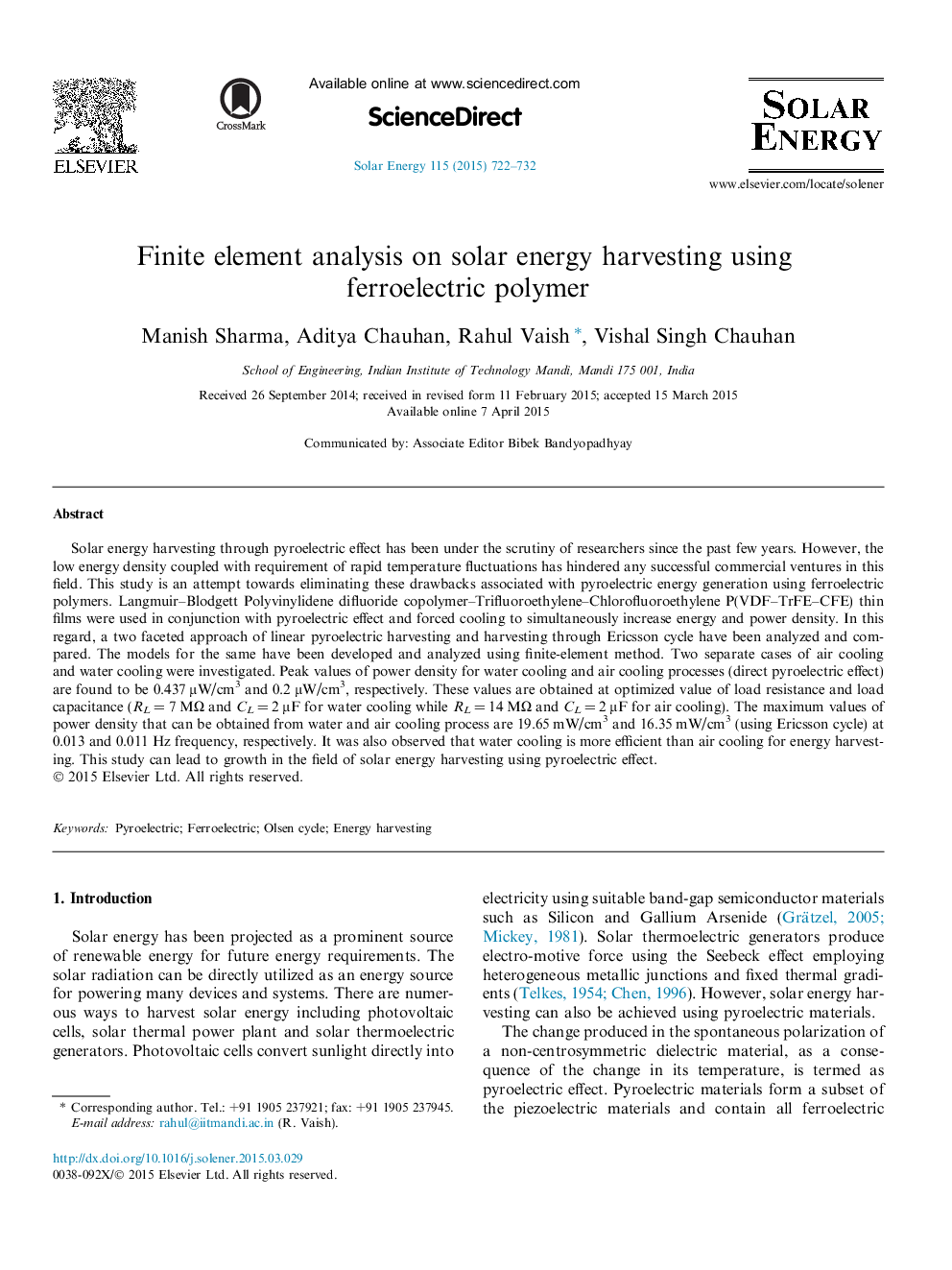| Article ID | Journal | Published Year | Pages | File Type |
|---|---|---|---|---|
| 7938111 | Solar Energy | 2015 | 11 Pages |
Abstract
Solar energy harvesting through pyroelectric effect has been under the scrutiny of researchers since the past few years. However, the low energy density coupled with requirement of rapid temperature fluctuations has hindered any successful commercial ventures in this field. This study is an attempt towards eliminating these drawbacks associated with pyroelectric energy generation using ferroelectric polymers. Langmuir-Blodgett Polyvinylidene difluoride copolymer-Trifluoroethylene-Chlorofluoroethylene P(VDF-TrFE-CFE) thin films were used in conjunction with pyroelectric effect and forced cooling to simultaneously increase energy and power density. In this regard, a two faceted approach of linear pyroelectric harvesting and harvesting through Ericsson cycle have been analyzed and compared. The models for the same have been developed and analyzed using finite-element method. Two separate cases of air cooling and water cooling were investigated. Peak values of power density for water cooling and air cooling processes (direct pyroelectric effect) are found to be 0.437 μW/cm3 and 0.2 μW/cm3, respectively. These values are obtained at optimized value of load resistance and load capacitance (RL = 7 MΩ and CL = 2 μF for water cooling while RL = 14 MΩ and CL = 2 μF for air cooling). The maximum values of power density that can be obtained from water and air cooling process are 19.65 mW/cm3 and 16.35 mW/cm3 (using Ericsson cycle) at 0.013 and 0.011 Hz frequency, respectively. It was also observed that water cooling is more efficient than air cooling for energy harvesting. This study can lead to growth in the field of solar energy harvesting using pyroelectric effect.
Related Topics
Physical Sciences and Engineering
Energy
Renewable Energy, Sustainability and the Environment
Authors
Manish Sharma, Aditya Chauhan, Rahul Vaish, Vishal Singh Chauhan,
